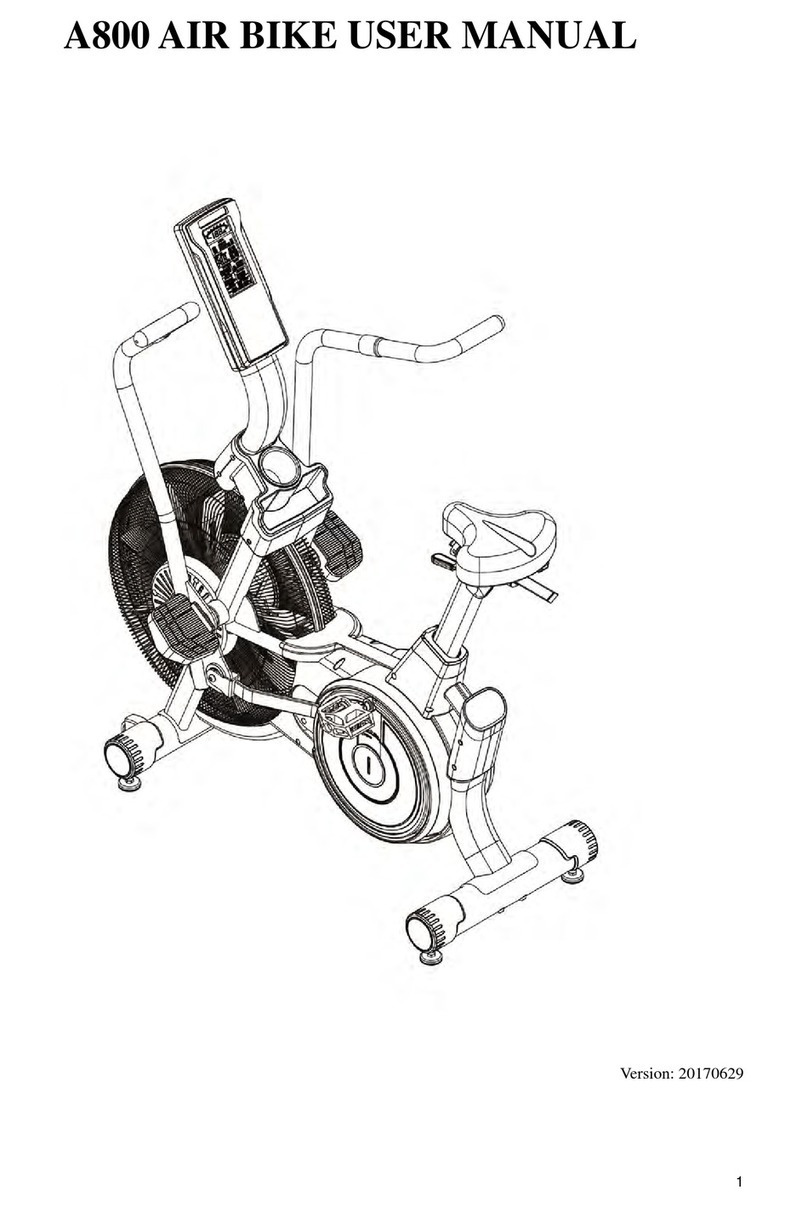GENERAL SAFETY PRECAUTIONS
The successful and safe operation of the Group Exercise Cycle is dependent upon its proper handling, installation operation and maintenance.
The following safety precautions are for your safety and guidance. Please read them carefully before proceeding to install and/or operate the
Group Exercise Cycle. Specific safety notices are included in the text where appropriate.
Read through this operating handbook to familiarise yourself with the equipment.
Trained personnel should supervise all training and rehabilitation sessions.
Check the crank arms daily for any signs of stress fatigue and check the pedals for spindle wear as shown in Section 5.
The correct use of Pulse Fitness machines is of paramount importance. The machines should be adjusted to suit each individual and care
should be taken when starting and completing an exercise session.
Ensure that all users of the equipment are familiar with these safety precautions and operating procedures.
Persons who are generally unfit (i.e. have not taken regular exercise for some time) should seek expert advice before using this equipment.
Similarly, persons with known medical conditions (e.g. angina, asthma, high blood pressure, etc.) should seek medical advice.
Always warm up by exercising gently before progressing to a full programme of strenuous exercise. Similarly, reduce your level of activity
gradually towards the end of your exercise programme.
NOT suitable for medical/therapeutic purposes.
If you feel light-headed, dizzy or suffering from any kind of pain whilst exercising, STOP IMMEDIATELY.
Seek medical attention immediately if injury is incurred.
Do not drink from bottles or cups without a lid. Do not place cups/bottles anywhere on the machine except from in the supplied bottle holder.
Keep limbs clear of moving parts. Do not wear loose clothing or jewellery that may become entangled with moving parts.
Keep an area of 1 metre clear around the Group Exercise Cycle when operational; a crowded room is a hazard.
WARNING, excessive or incorrect training can be detrimental to your health.
Do not allow children to train unsupervised on the Group Exercise Cycle.
Exchange faulty parts IMMEDIATELY with ONLY genuine Pulse Fitness parts. Do not use equipment until repaired.
The flywheel momentum of the bike will keep the pedals turning even after the user stops pedalling or in the event the user’s feet slip off the
pedals. Do not dismount the bike or attempt to remove your feet from the pedals until both the pedals and the flywheel have stopped completely.
Failure to comply may lead to loss of control and serious personal injury.
7




























